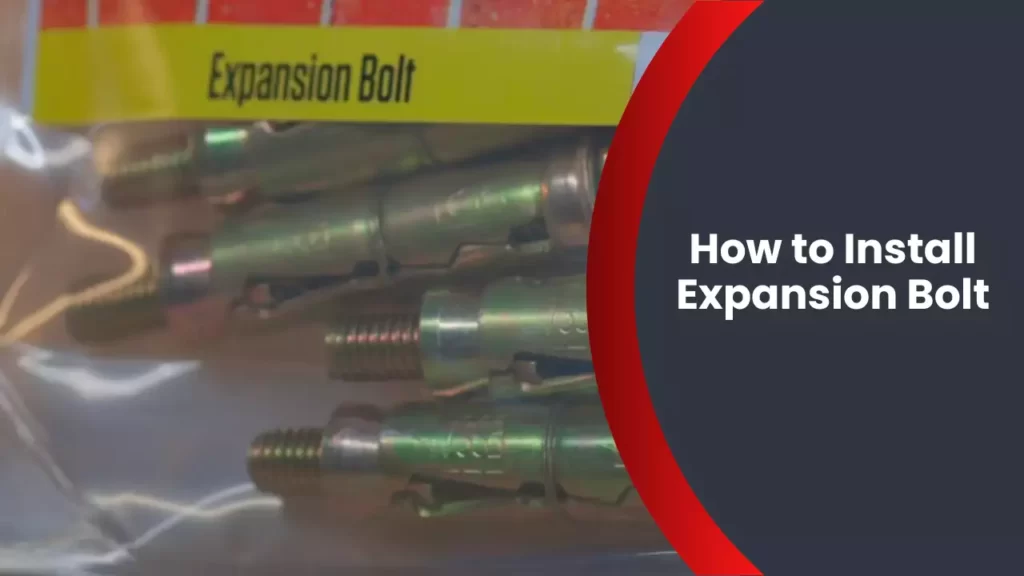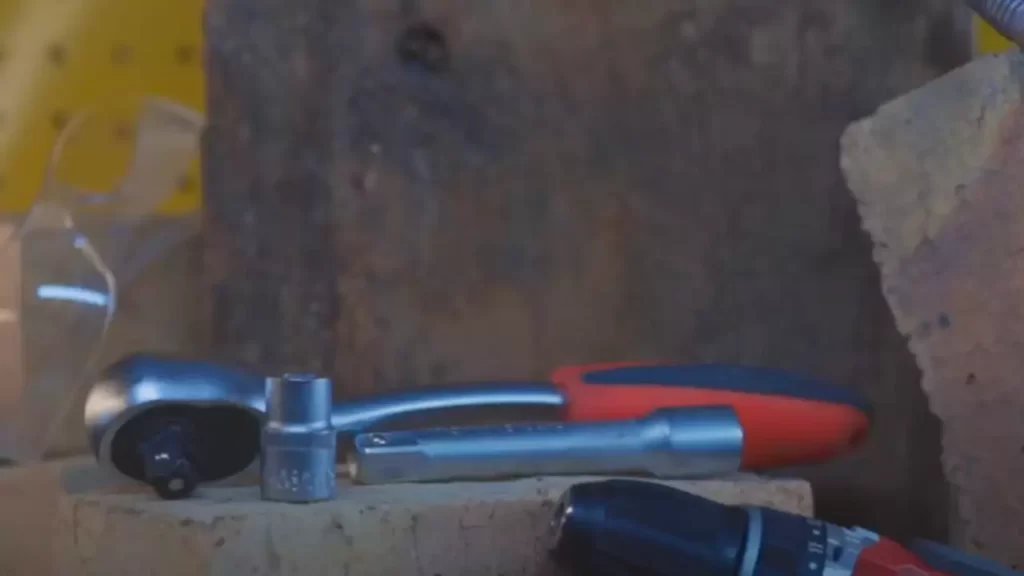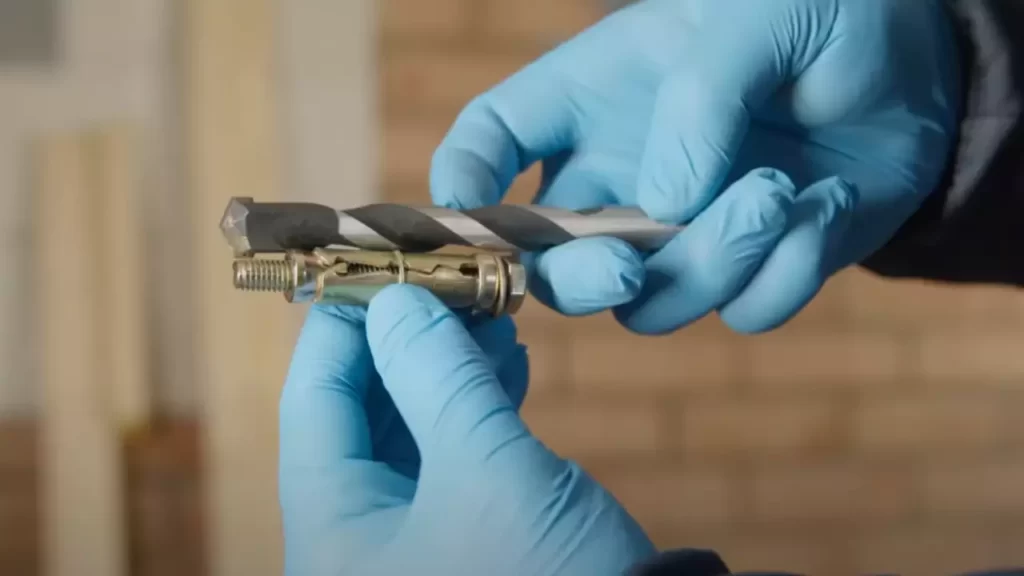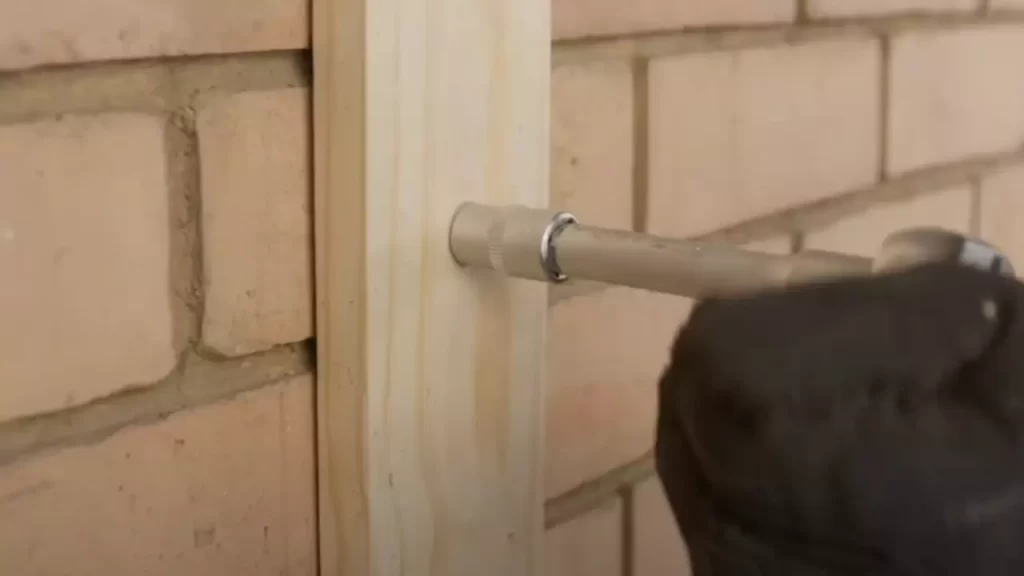To install an expansion bolt, first, drill a hole into the marked location on the wall using a drill bit that matches the size of the bolt. Then insert the bolt into the hole and tighten it using a wrench until secure.
Expansion bolts are commonly used for anchoring heavy objects to concrete or masonry surfaces and provide a strong and reliable hold. Whether you’re installing shelves, brackets, or other fixtures, understanding the correct method for installing expansion bolts is essential for a safe and successful installation.
By following these simple steps, you can easily secure your objects to the wall and ensure stability and durability.
Understanding The Basics
In this section, we will take a closer look at the fundamentals of expansion bolts. Before you start your project, it’s important to have a clear understanding of what expansion bolts are, how they work, and the advantages they offer. Let’s dive right in!
What is an Expansion Bolt?
An expansion bolt, also known as a wedge anchor or expansion anchor, is a type of fastener widely used for anchoring heavy objects to concrete, masonry, or other solid materials. It consists of a threaded bolt, an expansion sleeve, and a nut. The expansion sleeve is designed to expand as the nut is tightened, creating a secure and reliable connection.
How does an Expansion Bolt work?
The principle behind the working of an expansion bolt is quite simple. Once the hole is drilled into the material where you want to anchor your object, the sleeve is inserted into it, with the threaded bolt passing through the center. As you tighten the nut, it pulls the bolt towards the expansion sleeve. This causes the sleeve to expand, pressing against the walls of the hole. The friction generated between the sleeve and the material creates a strong grip, holding the bolt firmly in place.
Advantages of using Expansion Bolts
Expansion bolts offer several advantages over other types of fasteners, making them a popular choice in construction and DIY projects. Here are some of the key benefits:
- Easy Installation: Compared to alternative anchoring methods, expansion bolts are relatively easy to install. With basic tools and techniques, even beginners can securely anchor objects with confidence.
- Strong and Durable Hold: The expansion mechanism of these bolts ensures a solid and reliable connection. This makes expansion bolts ideal for heavy-duty applications that require strong anchoring, such as installing shelves, cabinets, or racks.
- Versatility: Expansion bolts can be used with a variety of materials, including concrete, brick, stone, and masonry. This versatility makes them a versatile choice for different projects and applications.
- Adjustability: Unlike some fasteners that are permanent once installed, expansion bolts offer the advantage of adjustability. You can easily loosen, reposition, or remove the bolt without damaging the material or the anchor itself.
Overall, understanding the basics of expansion bolts is key to ensuring a successful installation. Now that we know what they are, how they work, and their advantages, we can move on to the next step: the installation process. Stay tuned for our next blog post, where we will guide you through the step-by-step instructions on how to install expansion bolts like a pro!

Selecting The Right Expansion Bolt
When it comes to installing expansion bolts, selecting the right one is crucial for a successful and secure installation. The type of expansion bolt you choose will depend on various factors, including the nature of the material you are working with and the load it will be subjected to. To help you make the right choice, here are some important factors to consider when choosing an expansion bolt:
Factors to consider when choosing an expansion bolt
1. Material: Different expansion bolts are designed to work with different materials. Consider the material you are working with, whether it’s concrete, brick, or masonry, and choose an expansion bolt specifically designed for that material to ensure a secure fit.
2. Load capacity: Determine the load capacity required for your application. Consider the weight of the object that the expansion bolt will be supporting and select a bolt with sufficient load capacity to ensure it can handle the weight without compromising safety.
3. Environmental conditions: Take into account the environmental conditions the expansion bolt will be exposed to. Factors such as temperature variations, moisture, and chemical exposure can affect the performance and longevity of the bolt. Choose a bolt that is resistant to these conditions to ensure durability.
Types of expansion bolts and their specific uses
There are various types of expansion bolts available, each designed for specific applications. Here are some common types and their specific uses:
| Type of Expansion Bolt | Specific Uses |
|---|---|
| Sleeve Anchors: | Used for medium to heavy-duty applications in solid base materials such as concrete, brick, and block. |
| Wedge Anchors: | Ideal for heavy-duty applications in solid base materials such as concrete. |
| Drop-In Anchors: | Designed for medium to heavy-duty applications in solid base materials such as concrete. |
| Expansion Shields: | Used for lighter-duty applications in softer base materials such as brick and block. |
Tips for proper size selection
When choosing the right size expansion bolt, follow these tips:
- Measure the hole diameter: Before selecting a bolt, accurately measure the hole diameter to ensure a proper fit.
- Consider the depth: Take into account the depth of the hole to determine the required length of the bolt.
- Check for minimum embedment: Ensure that the bolt will be embedded deep enough into the base material to provide sufficient holding power.
- Consult manufacturer guidelines: Refer to the manufacturer’s guidelines and recommendations to select the appropriate size for your specific application.
By considering these factors and following these tips, you can confidently select the right expansion bolt for your installation needs. Remember, choosing the right bolt is essential for ensuring the safety and longevity of your project.

Step-By-Step Installation Guide
Installing expansion bolts is a crucial step to ensure the stability and security of various structures. Whether you are setting up shelves, hanging heavy items on walls, or securing machinery and equipment, getting the installation process right is of utmost importance. In this step-by-step guide, we will walk you through the installation process in a clear and concise manner.
Preparing the Surface for Installation
Before you begin the installation process, it’s essential to prepare the surface adequately. This involves cleaning the area free of debris, dirt, and any other obstruction that may hinder the installation. Use a brush or a cloth to wipe the surface clean. It’s also crucial to ensure that the surface is dry before proceeding further. Moisture or dampness can affect the effectiveness of the expansion bolts, compromising their stability.
Marking the Drilling Points Accurately
The next step is marking the drilling points accurately. Take precise measurements and use a pencil or marker to mark the points on the surface where you will drill the holes. Ensure that the markings are clear, visible, and align with your desired positioning. Double-check the measurements and markings to avoid any errors that might affect the overall placement and functioning of the expansion bolts.
Drilling the Holes to the Correct Depth
Once you have marked the drilling points, it’s time to drill the holes. Use a suitable drill bit that matches the size specified for the expansion bolts. It’s crucial to drill the holes to the correct depth to ensure optimal performance. Too shallow, and the bolts might not provide adequate support. Too deep, and the expansion feature may not engage correctly. Refer to the manufacturer’s instructions or product specifications to determine the appropriate drilling depth for your specific expansion bolts.
Inserting the Expansion Bolts Securely
With the holes drilled to the correct depth, it’s time to insert the expansion bolts. Hold the bolt securely and align it with the drilled hole. Gently tap it into place using a hammer until it is flush with the surface. Ensure that the threaded end of the bolt is fully exposed and extends out. Repeat this process for all the drilled holes and ensure that the bolts are inserted securely, without any wobbling or looseness.
Tightening the Bolts Properly
After securely inserting the expansion bolts, the final step is to tighten them properly. Use the appropriate spanner or wrench to tighten the nuts on the threaded end of the bolts. Start by hand-tightening each nut, ensuring that they are snug and not overtightened. Then, use the spanner or wrench to further tighten the nuts, following the recommended torque specifications provided by the manufacturer. Proper tightening ensures that the bolts are secure and offers the necessary structural support for your intended purposes.
In conclusion, following these step-by-step instructions will help you install expansion bolts correctly and ensure the stability and security of your structures. Remember to prepare the surface, mark the drilling points accurately, drill the holes to the correct depth, insert the expansion bolts securely, and tighten the bolts properly. By doing so, you can have peace of mind, knowing that your installations are solid and dependable.

Ensuring Safety And Stability
Importance of Checking Load Capacity
Before installing expansion bolts, it is crucial to understand the importance of checking their load capacity. By doing so, you can ensure the safety and stability of the structure you are working on. Ignoring load capacity can lead to disastrous consequences and compromise the overall integrity of the installation.
In simple terms, load capacity refers to the maximum load that an expansion bolt can handle without failing. This load includes both static and dynamic forces that may act on the structure. Thus, it becomes essential to accurately calculate the load capacity to guarantee optimal performance.
How to Calculate the Load Capacity for Expansion Bolts
Calculating the load capacity of expansion bolts is a critical step in the installation process. By following these steps, you can ensure a secure and stable installation:
- Determine the type and size of the expansion bolt: Different expansion bolts have varying load capacities depending on their design and dimensions. Refer to the manufacturer’s specifications to identify the appropriate bolt for your specific application.
- Identify the material of the base material: The load capacity of an expansion bolt is influenced by the properties of the base material. It is important to consider the strength and hardness of the material to ensure compatibility with the expansion bolt.
- Calculate the required number of bolts: Determining the quantity of expansion bolts needed depends on the anticipated load and the load capacity of each bolt. Divide the total load by the load capacity of a single bolt to determine the required quantity.
Regular Inspection and Maintenance Tips for Long-Term Stability
Ensuring long-term stability and safety of expansion bolts involves regular inspection and maintenance. Here are some useful tips to help you maintain the integrity of your installation:
- Periodically inspect the installation: Regularly check the bolts for any signs of damage, corrosion, or loosening. This will allow you to address any potential issues promptly.
- Keep the area clean: Remove any debris or contaminants that may accumulate around the expansion bolts. This will prevent interference with their performance and maintain their load-bearing capacity.
- Tighten loose bolts: If you notice any bolts becoming loose during inspections, tighten them immediately. Loose expansion bolts can compromise the stability and safety of the structure.
- Consider professional assistance: In complex installations or high-load applications, it is advisable to seek professional assistance. They can provide expert guidance and ensure the long-term stability of your expansion bolts.

Troubleshooting And Common Issues
Common problems encountered during installation
Despite being a relatively straightforward process, installing expansion bolts can sometimes pose challenges. It is essential to be aware of the common issues that may arise during installation and how to troubleshoot them effectively. By understanding these problems and their solutions, you can ensure the proper functioning and stability of your expansion bolts.
How to fix loose or improper expansion bolts
A loose or improperly installed expansion bolt can compromise the structural integrity of your installation and pose safety risks. If you encounter a loose or improper expansion bolt, it is crucial to address the issue promptly. Here are a few steps to help you fix the problem:
- Inspect the bolt: Check if the bolt is loose or improperly installed. Identify any visible signs of damage or wear.
- Tighten the bolt: Using an appropriate wrench or tool, carefully tighten the bolt until it securely grips the surrounding material. Take care not to overtighten, as it may cause damage.
- Verify the depth: Ensure that the bolt is inserted at the correct depth specified by the manufacturer. If it is too shallow, reinstall the bolt deeper into the material.
- Check the expansion sleeve: If the expansion sleeve appears damaged or worn, it may not provide adequate grip. Replace the expansion sleeve with a new one that matches the specifications of your bolt.
- Test the stability: After tightening and adjusting the expansion bolt, test its stability by applying gentle pressure to check if it holds firm. If the bolt remains loose or unstable, consider seeking professional assistance.
Addressing rust and corrosion issues
Rust and corrosion can significantly impact the performance and lifespan of expansion bolts, particularly in environments exposed to moisture or harsh elements. It is important to address these issues to ensure the long-term reliability of your installation. Here’s what you can do:
- Inspect for rust and corrosion: Regularly inspect your expansion bolts for signs of rust, corrosion, or discoloration. Pay close attention to areas exposed to moisture or other corrosive substances.
- Clean the affected area: If you notice rust or corrosion, use a wire brush or sandpaper to gently remove the affected areas. Wipe away any debris or loose particles.
- Apply rust-resistant coating: Apply a rust-resistant coating or primer specifically designed for metal surfaces to protect the expansion bolt from further rust or corrosion.
- Replace corroded bolts: If the expansion bolt is severely corroded, it is advisable to replace it with a new one to ensure optimal performance and safety.
By troubleshooting and addressing common installation issues, such as loose bolts and rust or corrosion, you can ensure the stability and longevity of your expansion bolt installation. Regular inspections and maintenance are key to identifying and resolving any problems promptly, thereby enhancing the safety and performance of your structure.
Tips For Successful Expansion Bolt Installation
Installing expansion bolts can be a critical step in ensuring the stability and strength of your construction project. Whether you are mounting heavy objects on walls or securing structural components, following the right procedures is crucial. In this section, we will discuss some important tips to keep in mind for a successful expansion bolt installation. By following these guidelines, you can ensure that your bolts are properly installed and provide the necessary support.
Following Manufacturer’s Instructions
One of the first things you should consider when installing expansion bolts is to carefully read and follow the manufacturer’s instructions. Each brand or type of bolt may have specific requirements and recommendations for installation. These instructions often include important details about drilling diameter, torque values, and other essential steps. Make sure to review and understand these instructions thoroughly before starting your installation process.
Best Practices for Accurate Drilling
Accurate drilling is imperative when it comes to installing expansion bolts. Proper drilling ensures a secure fit and prevents any potential damage to the surrounding material. Here are some best practices to keep in mind:
- Use the right drill bit size: Refer to the manufacturer’s instructions to determine the appropriate drill bit size. Using a drill bit that matches the expansion bolt’s diameter will help create a precise hole.
- Use a hammer drill: Most expansion bolts require drilling into concrete or masonry surfaces. To achieve the best results, use a hammer drill that can provide the necessary power and force for drilling through these durable materials.
- Maintain a perpendicular angle: Ensure that your drilling angle is perpendicular to the surface. This will result in a straight and stable hole for the expansion bolt.
- Keep the drill bit clean: Clear any accumulated debris from the hole regularly using compressed air or a brush. This will help maintain the accuracy of the hole and prevent any obstructions during installation.
Ensuring Proper Anchor Depth and Spacing
Proper anchor depth and spacing are vital for the strength and stability of the installed expansion bolts. Here are some points to consider:
- Determine the required anchor depth: Refer to the manufacturer’s instructions for the recommended depth of the anchor. This ensures that the expansion bolt is securely embedded in the material and can withstand the anticipated loads.
- Maintain sufficient spacing: Carefully plan and mark the anchor locations, ensuring the appropriate spacing between them. Following the recommended spacing guidelines helps distribute the load evenly and prevents overcrowding that may weaken the overall installation.
- Check for obstructions and voids: Before inserting the expansion bolt, ensure that the hole is free of any obstructions and voids. These interferences may affect the proper setting and expansion of the bolt, compromising its effectiveness.
Using the Right Tools and Equipment
Using the right tools and equipment is crucial for a successful expansion bolt installation. Here’s what you need to keep in mind:
- Choose the appropriate wrench or socket: Depending on the type of expansion bolt, you may need a specific wrench or socket for tightening. Ensure you have the right tool to apply the correct amount of torque without damaging the bolt or the material.
- Use safety goggles and gloves: Drilling and handling expansion bolts requires personal protective equipment. Always wear safety goggles to protect your eyes from debris and gloves to prevent any injuries or discomfort.
- Inspect tools and equipment: Before starting the installation, ensure that your tools and equipment are in good condition and functioning correctly. Damaged or worn-out tools can compromise the installation process and the overall strength of the expansion bolt.
By following these tips, you can ensure the successful installation of expansion bolts. Remember to carefully read the manufacturer’s instructions, practice accurate drilling techniques, ensure proper anchor depth and spacing, and use the right tools and equipment. Taking these precautions will help you achieve a secure and reliable installation that meets your project’s requirements.
Frequently Asked Questions
How Does An Expansion Anchor Bolt Work?
Expansion anchor bolts work by using a tightening mechanism to expand a metal sleeve against the walls of a hole. This creates a secure connection between the bolt and the substrate, providing stability and support for various applications. As the bolt is tightened, the sleeve expands, increasing its grip and ensuring a strong anchor point.
Are Expansion Bolts Strong?
Yes, expansion bolts are strong. They provide reliable and secure fastening in various materials, including concrete and masonry. Expansion bolts expand to create a tight fit, ensuring stability and strength.
Which Is Better Anchor Bolt Or Expansion Bolt?
Anchor bolt is better for heavy-duty applications where a secure fastening is needed. Expansion bolt, on the other hand, is suitable for lighter loads and can be used in materials with less density. The choice depends on the specific requirements of the project.
What Is The Minimum Spacing For Expansion Bolts?
The minimum spacing requirement for expansion bolts depends on various factors such as the load capacity and type of material being fixed. However, it is generally recommended to maintain a minimum spacing of 10 times the diameter of the bolt for adequate support and stability.
Conclusion
Installing expansion bolts can be a straightforward process if you follow these steps carefully. By selecting the right drill bit size, drilling a proper hole, and inserting the bolt securely, you can ensure a strong and reliable anchor. Remember to tighten the bolt firmly but avoid over-tightening.
With a little practice and precision, you’ll be able to confidently install expansion bolts for a variety of applications. Happy DIYing!
